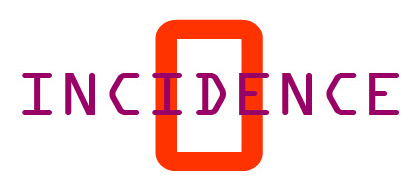
No-Nonsense Evidence-based HIV Prevention Approach
Welcome to the archives of the Incidence 0 blog
The Incidence 0 blog was started on March 20, 2011 as the field of HIV prevention was at a turning point in its history. I managed, wrote and edited this blog during my spare time. Views expressed did not necessarily reflect or represent those of the organisations I was working for or contribute to, as a matter of facts, this would have been surprising then, and now, but creation is in contradiction.
Back in 2011, the succession of encouraging results that was coming out of the clinical trials of NPTs - New Prevention Technologies (Circumcision, Microbicides, PrEP), and a growing recognition that HIV treatment also contribute to preventing HIV transmission were raising new hopes. But these recent advances often raised more questions than they answered and, happening on the background of an economic recession, created confusion and dilemmas amongst advocates, funders and beneficiaries as to what should be done next to successfully contain and quell the HIV epidemic.
With the achievements of the Millennium Development Goals (MDG) then under review (see below) and a prevention revolution at the heart of the UNAIDS strategic plan for 2011-2015, it was time for one or more conversations about the future of HIV prevention - if we want to lead a successful HIV prevention revolution.
This was what this blog aimed to contribute to. It formally ended on March 6, 2018, although posting had largely dried out by the end of 2015. Times had changed, new voices and faces needed to take front stage.
I am republishing it in a new space, reviewing each post to reflect on my thoughts at the time of writing. I'll briefly comment on any changes in my views or in the field of HIV prevention and share my thoughts on the current direction and future of HIV prevention. I'll also add clarifying notes where needed. This exercise promises to be insightful.
There are over 50 posts to go through and this will take some time, bear with me and let's star with the opening post, dated March 20, 2011.
Roger Tatoud
Note: I have not made changes to the original postings, as they reflect my ongoing journey in learning the English language.
Millennium Development Goal 6: combat HIV/AIDS, malaria and other diseases
Target 6A. Have halted by 2015 and begun to reverse the spread of HIV/AIDS
Target 6B. Achieve, by 2010, universal access to treatment for HIV/AIDS for all those who need it.
"New HIV infections are declining steadily, led by sub-Saharan Africa. In 2009, an estimated 2.6 million people were newly infected with HIV—a drop of 21 per cent since 1997, when new infections peaked. Thanks to increased funding and the expansion of major programmes, the number of people receiving antiretroviral therapy for HIV or AIDS increased 13 fold from 2004 to 2009. By end-2009, 5.25 million people were receiving such treatment in low- and middle-income countries — an increase of over 1.2 million people since December 2008. As a result, the number of AIDS-related deaths declined by 19 per cent over the same period."
Source: The Millennium Development Goals Report 2011
See also: Fukuda-Parr, S., Yamin, A. E., & Greenstein, J. (2014). The Power of Numbers: A Critical Review of Millennium Development Goal Targets for Human Development and Human Rights. Journal of Human Development and Capabilities, 15(2–3), 105–117. https://doi.org/10.1080/19452829.2013.864622
For a more up-to-date dataset see the UNAIDS 2012 Factsheet, in 2011:
- 34 million people were living with HIV.
- 2.5 million people became newly infected with HIV Worldwide.
- 1.7 million people died from AIDS-related causes worldwide, 24% fewer deaths than in 2005.
- More than 8 million people living with HIV had access to antiretroviral therapy. The number of people accessing HIV treatment increased by 63% from 2009 to 2011. In 10 low- and middle-income countries, more than 80% of those eligible are receiving antiretroviral therapy. However, 7 million people eligible for HIV treatment still do not have access.
By comparaison, in 2023
- 39.9 million people globally were living with HIV.
- 1.3 million people became newly infected.
- 630 000 people died from AIDS-related illnesses.
- 30.7 million people were accessing antiretroviral therapy.
Significant progress has been achieved in the past 12 years, though the slowing rate of progress raises questions about whether HIV is becoming endemic.